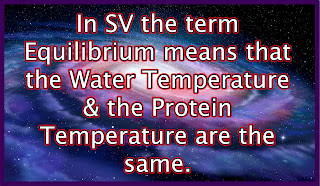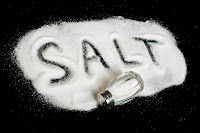Ribeye 67.2 mm thick (Sous-Vide & Equilibrium Review)
The Ribeye, one of my favorite cuts, happens to be very prevalent in the groups, hence my inclination to use it as my muse. This prompted me to make another post on Equilibrium Processed Proteins. I've written a lot on EQ processing and Delta-t cooking, but I am finding disparate methodology, which inspired me to write another article on this method.
When I come across posts relating to time, I always attempt to answer but always suggest reading Dr. Baldwin's book on SV. Before attempting this cooking method, the required reading should be "A Practical Guide to Sous-Vide Cooking by Dr.Baldwin." but sadly, out of ignorance or not knowing it's available, people skip this essential information.
How about those nifty apps that can help with times and temps? Conceptually apps are incredible, but they fail to operate as advertised. See my article Sous-Vide Apps & Guides "Should you use them"
I've come across many posts that don't understand the basics. I often see group members suggest, post, or discuss processing times for proteins that will never achieve a state of Equilibrium. I wrote a specific article that addresses this issue called "Time to Temp? Can you tell the difference?
After tying with butcher's twine, I Dry-Brine with 1% Fish Salt (Faux Aging). If you prefer just salt, I would suggest starting out with 0.60% Salt. How to calculate percentage? 1497 grams X 1% or .01 = 14.97 grams. I was not concerned about the bone weight because this percentage is very minute. I've seen people use up to 1.5%.
To ensure maximum diffusion of the Fish-Salt, the Ribeye was placed in the refrigerator for 4-Days. Three days is minimum for Fish-Salt, but this protein was very thick and needed more time.
As you can see from the chart, the required time to reach E.Q. was 05:19:41. If I can be candid for a moment: Do I believe the protein would have suffered in any way as in terms of mouthfeel and looks had I only processed to 132.5f at the time of 04:15:03? Would I have been able to distinguish a 1/2 f? Absolutely not. In fact, a whole degree and maybe two would have made very little difference in mouthfeel or what it visually looked like in terms of doneness. The purpose of this post is to recognize that the times required to process proteins can take longer than one assumes. As pointed out in my article "Time to Temp," you cannot differentiate doneness by observation.
I've said this before in past articles, but many would have underprocessed by the time and been perfectly happy with the results. Unknowingly, and I can only assume the mitigation for underprocessing happens during the sear. Whereas my sears only take about 45-60 secs aside, their's may take longer. I've seen ridiculous posts like....." S.V. a 2-Inch Ribeye for 2-Hours and seared for 3-4 Minutes aside."
I'll touch on shocking but just briefly. It takes a lot of Ice!!! People do not cool proteins adequately. It takes a tremendous amount of Ice to cool proteins. I've seen people go crazy over food safety guidelines related to pasteurization but never about shocking properly. If you are curious about cooling foods according to the USDA or FSIS standard, give it a search. I always have 60 plus pounds of Ice on hand to cool proteins.













Comments
Post a Comment